#urban food systems
Text
Growing food is a relationship. Part of that relationship is compost.
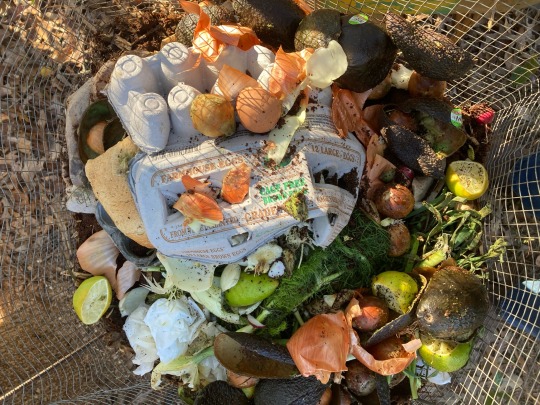
#compost#food systems#atlanta urban ag#food access#soil food web#soil health#food sovereignty#community composting systems#raised beds#vermicomposting#visionary growing solutions#maurice small
53 notes
·
View notes
Text
This photo is of 1/10th of the compost dug up for our garlic beds this winter.
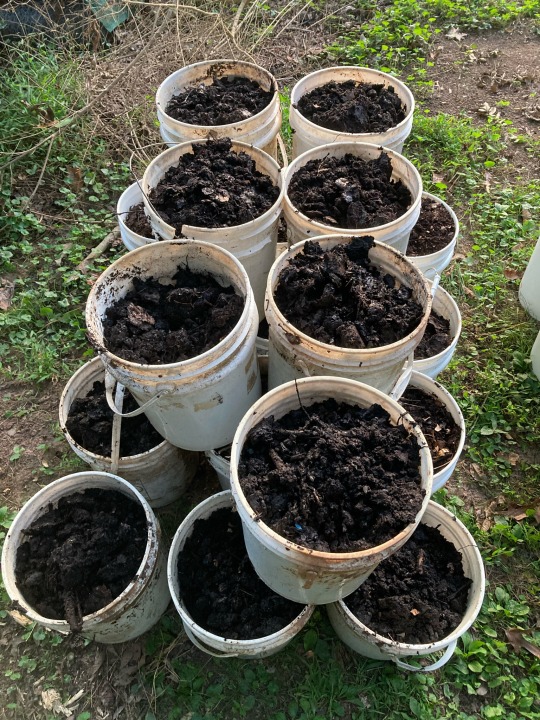
#compost#food access#atlanta urban ag#garlic beds#winter prep#bed preparation#food systems#soil health#food sovereignty#seed saving#garlic
37 notes
·
View notes
Text
this really cool article - https://www.bu.edu/bhr/2015/02/01/780/
talks about the history, particular England, and its grocery delivery system over the decades. How originally, you would send a list to a shop keeper for goods like Flour, sugar, milk, etc.. And have it delivered.
Than the Cash and carry system, during the depression kicked off in order to save on delivery costs. Basically putting all the work of Picking, sorting, loading, and transporting onto the individual rather than the business.
But god, in a current system where you have something akin to a post officer do this?? It would really help decentralize cars as primary mode of transport if you didn't have to do all the work yourself.
It's draining, its manual labor in its own right. Its not accessable. Its not efficient. It creates a competition on food that isnt necessary mostly for Perfect Produce. Lately we are starting to return to this threw delivery systems like Instacart (Gag) who exploit workers and customers for profit.
But again, imagine for just a moment what this COULD look like. A neighborhood wide grocery drop off day like garbage pick up or the mail. Imagine having a day you knew was every week that you'd fill out a list and someone shows up with that sugar you where low on bc you wanted to make cookies. Imagine having the SAME rotation of ppl so you could know them. Imagine how different meal planning becomes, how communical it could be. How your neighbors might have over estimated how much tomatoes they go threw and ordered more so they brought you salsa.
#accessability#food systems#anarchist#anticapitalism#Solarpunk#community#food mention#rants#long post#feel free to add your own ideas I am just obsessed with it bc it's the best option I know of atm#someone discuss this with me#hopepunk#gardening#urban gardening#grocery
139 notes
·
View notes
Text
Hello and Good day!
Today I got to move the chicks from the grow out pen into the run 🐣🐥🐔 thought I'd share their journey so far :)
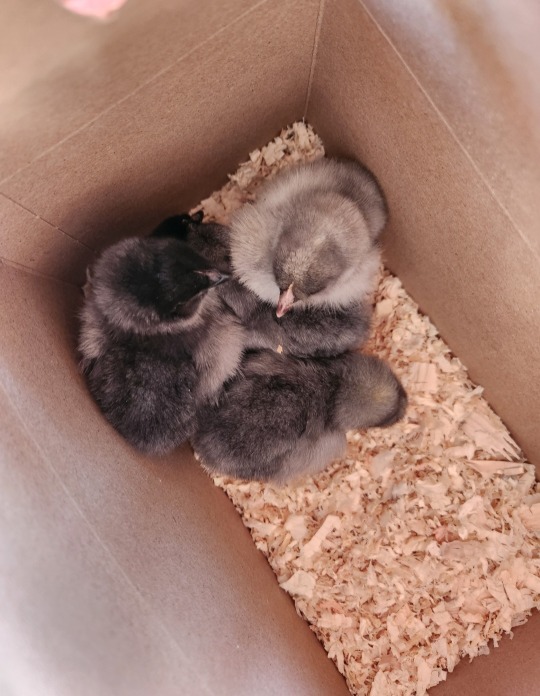
We chose to purchase chicks, rather than hatch as we don't currently have a rooster. To be perfectly honest, I'd like to test out with eggs from another source to be sure I know how to incubate properly before getting into that venture. (Though selling or trading chicks with the neighbours would be fun someday!)
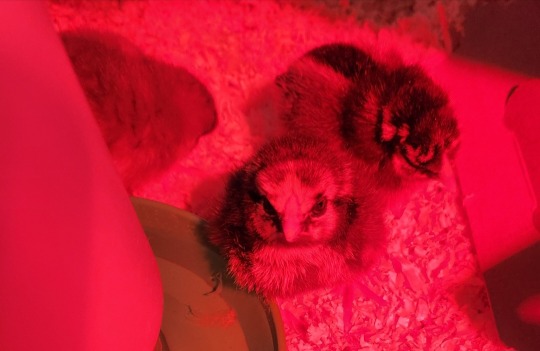
They get put in a large tub, with a chick waterer on stone and wood shaving bedding. I leave the box they came home in the tub for shade from the heat lamp. They are so stinking small at this time and cuuute!

Later when they got bigger we upgraded to what we call the grow out pen. It used to be a trellis for one of the raised bed but got repurposed along with a few other things. No sense in wasting perfectly good material.
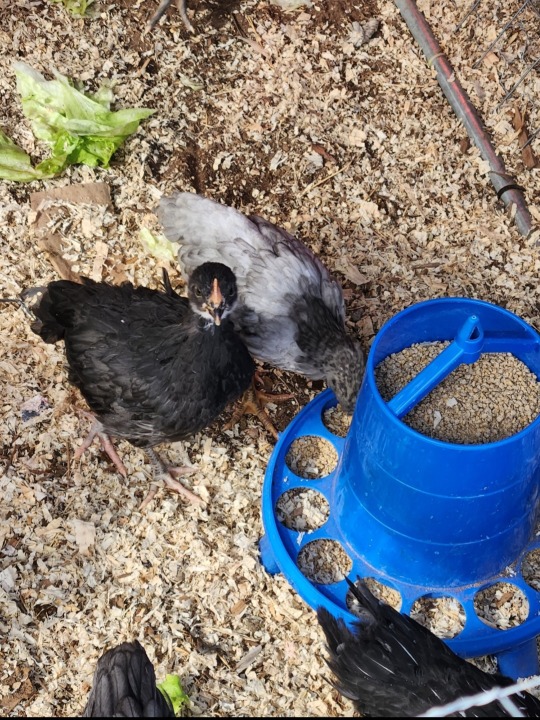
I started switching to grain and seed feed around 6 weeks of age. Mixing 50/50 chicken feed grain till the last bagw as empty. I also started sharing kitchen and garden scraps around this time. Mostly leafy greens and occasional bread slices.

They are always up and going! Even around 2 am lol

Today's moving day! Their a little skittish still when I snapped this photo and I expect they will continue to be for a few days yet as I try to remain fairly hands free for them. I'll probably move the lamp in tonight, but after awhile more, ill be removing it entirely. Tomorrow I'll be giving them a half tray of fresh lentil sprouts as a treat and they'll be getting some garden clean up too :)
That's it for now :)
🐣🐔Happy Homesteading!🐔🐣
12 29 2023
#homesteading#self sufficient living#thestudentfarmer#studentfarmer#self sufficiency#food#garden#urban animal keeping#low waste#chickens#be responsible animal keeper#gardening#urban biodiversity#urban homesteading#urban gardening#urban farming#right to grow#eggs#smalls scale differences#local food system#small scale food system#feed your family#feed yourself#chicken keeping
10 notes
·
View notes
Text

Don’t eat less, just eat right! Exact like #bellpepper, nutritious yet in low-calories.
Did you know the healthy contribution of bell peppers to our daily lives?
✅Rich in Multiple Vitamins and antioxidants
✅Contains Carotenoids
✅Improve eye health
✅Reduces risk of chronic diseases
Shop fresh vegetables available at HIMALAYAN GREENS!
DM to order, or call ☎️ (+91) 843-900-5502
#hydroponic farming#hydroponicgardening#healthyfood#himalayan greens online#bell peppers#hydroponic system#hydroponic foods#hydroponicvegetables#indoor farming#soillessfarming#urban farming#salad#healthy eating
3 notes
·
View notes
Text
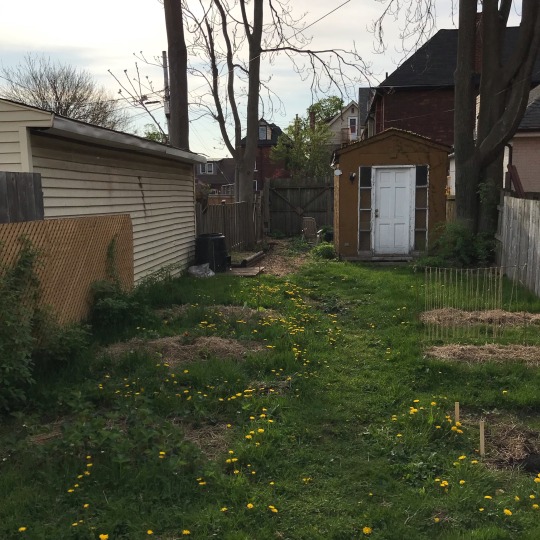
May 15- the yard is almost fully planted! The dandelions are also in full force- not that mad about it because taproots are good in clay soil/the blossoms are good for pollinators. Last week I made roasted dandelion root tea and I’m thinking about trying to make dandelion jelly next week. Yesterday I picked up my seedlings from a local seed co and managed to get them in the ground. I’m feeling a bit overwhelmed because there are things I’ve never grown before and requirements I hadn’t thought of in the planning stages, but I’m just trying to remind myself that this is how learning works and it doesn’t need to be perfect
#roberts-island#personal#backyard garden#cottagecore#farmcore#solarpunk#urban homesteading#seedlings#gardenblr#sustainable food systems#vegetable garden
3 notes
·
View notes
Text
Exploring the Revolutionary World of Aquaponic Farming
Have you ever imagined a farming system that combines fish farming and plant cultivation in a symbiotic relationship? Welcome to the revolutionary world of aquaponic farming! In this blog post, we will dive deep into the concept of aquaponics, uncover its benefits, and shed light on its potential to transform the way we produce food sustainably.
What is Aquaponic Farming?
Aquaponics is an…
View On WordPress
#Aquaculture#Aquaponic farming#Efficient farming#Fish farming#hydroponics#Plant cultivation#Recirculating system#sustainable farming#Sustainable food production#urban farming
0 notes
Text
Take a deep dive into the urbanization – agrifood systems nexus.
The 2023 edition of The State of Food Security and Nutrition in the World report will, as usual, present the latest updates on the food security and nutrition situation around the world, including updated estimates on the cost and affordability of healthy diets. Subsequently, it will take a deep dive into the urbanization – agrifood systems nexus.
#urbanization#agriculture#agrifood systems#SOFI2023#nutrition#food and agriculture organization of the united nations (fao)#urbanization – agrifood systems nexus
0 notes
Text

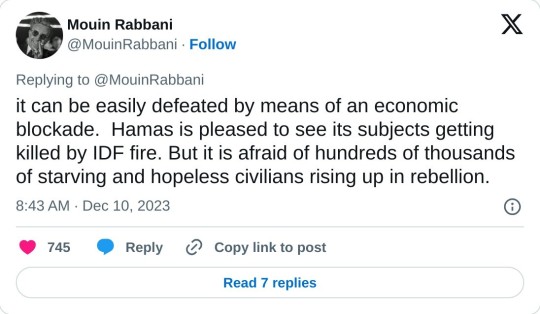
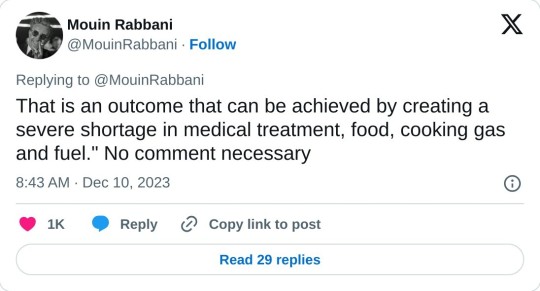
First, this shows a delusional lack of understanding of Hamas by a former Israeli general. Hamas is neither pleased to see its own people destroyed (all of its fighters are Gazans, born and raised there. The people being killed their relatives, friends and neighbours) nor is it worried about Gazans 'rising in rebellion.' Why would Gazans rebel against their own resistance movement instead of the IDF? I know some people are going to say, 'Eiland is trying to soothe a dissatisfied Israeli public,' but earlier today, the IDF released a statement about Yusuf al-Mansi who is being held and tortured.

They're not just targeting Western audiences by trying to blame their crimes on Hamas, they're also trying to convince Gazans.
Look at all the dumb decisions made by the IDF - tanks with no infantry support, urban warfare against a guerilla army with an extensive tunnel system, letting their soldiers filming themselves (which both alienates the world and gives away their location), lying very incompetently about the war crimes it commits (like the siege and destruction of Al Shifa Hospital), releasing videos of IDF fighters shooting at walls, furniture, the air itself, etc and that's just in Gaza. The Israel government is now threatening to start war in Lebanon and fight the Ansar Allah group in Yemen the same time.
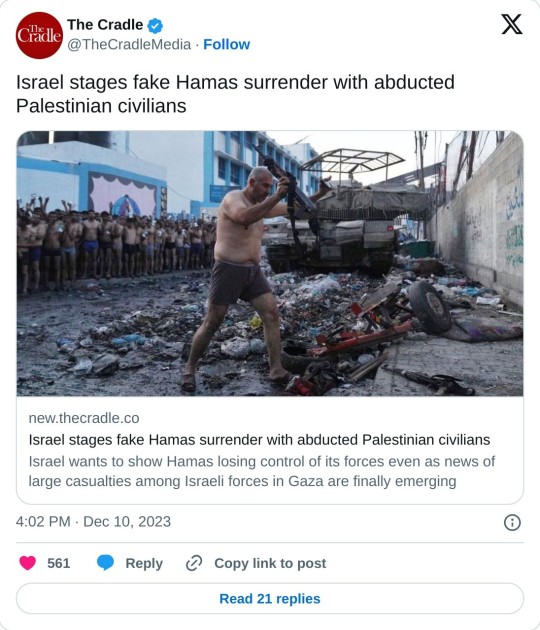
Secondly this signals that Israel has no intention of ending the siege soon. While Gazans are at risk of mass starvation, the real threat is disease, particularly illnesses like typhoid, cholera and dysentery.
We must not stop demanding that Gazans get sufficient humanitarian aid (not 20 measly trucks of expired food)
#yemen#jerusalem#tel aviv#current events#palestine#free palestine#gaza#free gaza#news on gaza#palestine news#news update#war news#war on gaza#war crimes#genocide#edited
2K notes
·
View notes
Text
This is approximate since calculations vary, but somewhere in the neighborhood of 20% of carbon emissions since the Industrial Revolution have come from destruction of terrestrial ecosystems—wetland destruction, deforestation, degradation of grasslands and so on
Soil, soil communities, root systems, carbonate rock, wood, living plants, and peat in wetlands—all holds carbon
Now consider what plants do for you
The mere sight of plants and trees improves mental and physical health. I won't elaborate much more upon this, the positive effects are incredible and overwhelming.
Trees and vines that shade your home and outdoor areas: reduce the cost of cooling, meaning less electricity is used. Shade reduces the risk of death in extreme heat events.
(Trees also reduce light and noise pollution)
Edible plants (many wild plants and many plants you can grow): provide you with food reducing your dependence on industrial agriculture and cars to reach supermarkets
Community gardens and orchards: creates resilience and interdependence among small local communities, reducing the power of capitalism and increasing the ability of individuals to organize and create change. Makes more sustainable and plant based diets accessible to people for whom they would ordinarily be inaccessible
Compost piles for gardening: less greenhouse gas emissions than result from waste breaking down anaerobically in landfills
No more traditional lawns: much less use of gas powered lawn mowers, weed whackers etc. which are, by themselves, significant contributions to carbon emissions and urban pollution
Crafting and creating using plants: Locally available wild plant species can be used by local crafters and creators for baskets and containers, yarn, fabrics, dyes, and the like, resulting in less dependence on unsustainable and unethical global industries
More people growing and gathering edible and useful plants and using them = larger body of practical, scientific and technological insights to draw from in order to solve future problems
In conclusion: Plants
#plants#plantarchy#you are a caretaker#climate change#climate change mitigation#climate change adaptation#gardening#community gardens
3K notes
·
View notes
Text
Happy solstice and liberation.
Giving thanks for the day.

#winter solstice#solstice#compost#food systems#atlanta urban ag#food access#soil food web#soil health#food sovereignty#vermicomposting#community composting systems#visionarygrowingsolutions#tending to the herbs#simple food small farmz#airbnbexperience#herbs#maurice small
23 notes
·
View notes
Text

There is a certain feeling you get when you grow great soil that grows great food.
#soil health#compost#lettuce#onions#atlanta urban ag#raised beds#food systems#food access#biodiversity#permaculture#maurice small
113 notes
·
View notes
Text
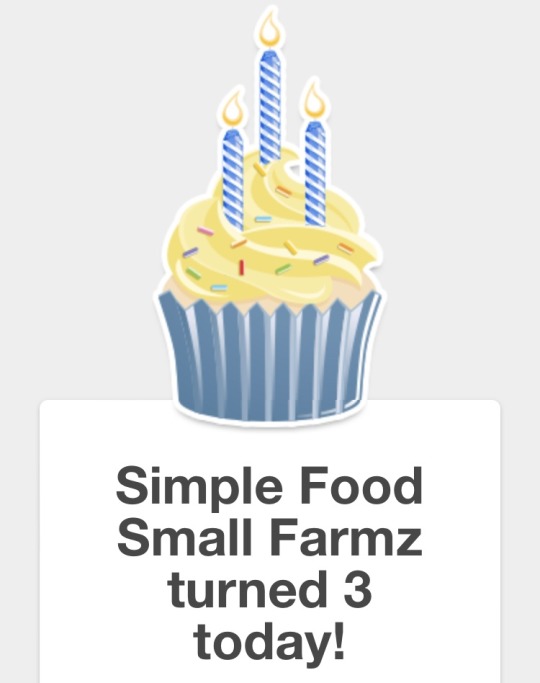
It’s a blessing. 🌱
#atlanta urban ag#simple food small farmz#compost#biodynamic#soil#biodiversity#soil biology#soil creation#permaculture#urban ag#soil health#bio char#food systems#food sovereignty#mulch#soil food web#vermicomposting#food not lawns#community composting systems#maurice small
0 notes
Text
Hello and Good Day all,
Wanted to share what's hopping in the garden so far this week 🌱

Baby sunflowers coming up (gen 3 I believe if I recall right)
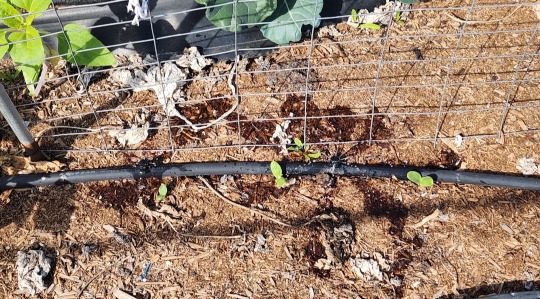
Armenian cucumbers, I'm going to attempt to trellis these ones to see how well they'll produce this way. After a winter with 0 of them I hope we get plenty thus spring/summer!
Update to the broccoli seed
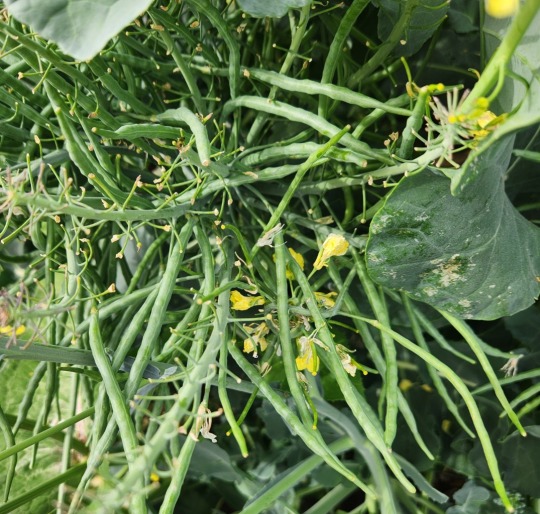
A friend came by and happened to see them growing and got very confused, asking when I had planted green beans?
It took a moment for me to realise they were pointing to the broccoli and not the bean row behind them 🤦♀️ (where I had a few months ago planted some fresh beans that never sprouted due to the weather). We had a nice convo about how some plants seed.



The nasturtium is now blooming in 3 colors 🎉 🤩🤩
I will definatly be saving seed from this year's mixed batch and with luck have enough to take to the nearby libraries seed-library program 🥰 and to share with a few gardeners in the area.
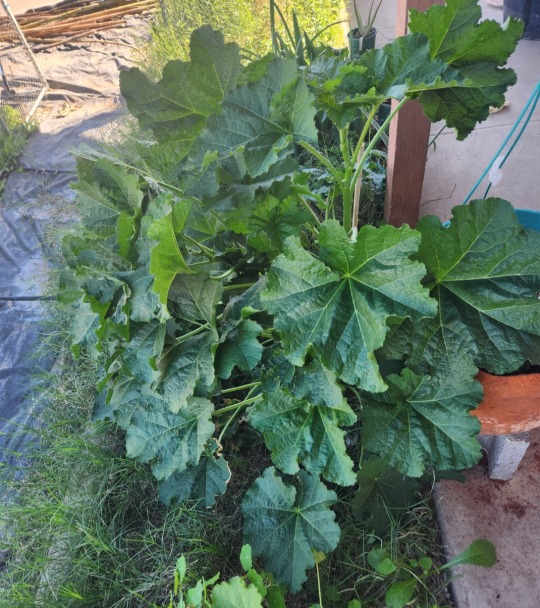
A second year HollyHock returning, this excites me pretty good too, so far as I've grown them none have returned, so I am thrilled to see what colors come from this one (I've seeded red, deep red, pink and white and I believe a purple variety. )

And I learned how to poach eggs this week for the first time! It was kinda weird the first try (as seen here) but the pupper enjoyed a nice lil snack :)
As well, I got a new panel of fencing made up for the front garden space. I'm not yet 100% on what I'll do in the extension but will be figuring it out eventually 😂
As to the back extension, i got some planning laid out, next is getting the beds made and water lines laid out. I really want melons this year, so I am going to work very hard to get them :)
That's it for the update for now :) Thanks for coming by!
🌱🌻Happy Homesteading and Gardening 🌻🌱
3 12 2024
#homesteading#self sufficient living#thestudentfarmer#studentfarmer#self sufficiency#food#garden#gardening#low waste#chickens#frugal cooking#learning skills#city garden#urban green spaces#urban biodiversity#urban homesteading#urban gardening#grow what you eat#eating in season#food waste#food desert#local food system
4 notes
·
View notes
Text
The Best News of Last Week
1. ‘It was an accident’: the scientists who have turned humid air into renewable power
Greetings, readers! Welcome to our weekly dose of positivity and good vibes. In this edition, I've gathered a collection of uplifting stories that will surely bring a smile to your face. From scientific breakthroughs to environmental initiatives and heartwarming achievements, I've got it all covered.

In May, a team at the University of Massachusetts Amherst published a paper declaring they had successfully generated a small but continuous electric current from humidity in the air. They’ve come a long way since then. The result is a thin grey disc measuring 4cm across.
One of these devices can generate a relatively modest 1.5 volts and 10 milliamps. However, 20,000 of them stacked, could generate 10 kilowatt hours of energy a day – roughly the consumption of an average UK household. Even more impressive: they plan to have a prototype ready for demonstration in 2024.
2. Empty Office Buildings Are Being Turned Into Vertical Farms

Empty office buildings are being repurposed into vertical farms, such as Area 2 Farms in Arlington, Virginia. With the decline in office usage due to the Covid-19 pandemic, municipalities are seeking ways to fill vacant spaces.
Vertical farming systems like Silo and AgriPlay's modular growth systems offer efficient and adaptable solutions for converting office buildings into agricultural spaces. These initiatives not only address food insecurity but also provide economic opportunities, green jobs, and fresh produce to local communities, transforming urban centers in the process.
3. Biden-Harris Administration to Provide 804,000 Borrowers with $39 Billion in Automatic Loan Forgiveness as a Result of Fixes to Income Driven Repayment Plans

The Department of Education in the United States has announced that over 804,000 borrowers will have $39 billion in Federal student loans automatically discharged. This is part of the Biden-Harris Administration's efforts to fix historical failures in the administration of the student loan program and ensure accurate counting of monthly payments towards loan forgiveness.
The Department aims to correct the system and provide borrowers with the forgiveness they deserve, leveling the playing field in higher education. This announcement adds to the Administration's efforts, which have already approved over $116.6 billion in student loan forgiveness for more than 3.4 million borrowers.
4. F.D.A. Approves First U.S. Over-the-Counter Birth Control Pill

The move could significantly expand access to contraception. The pill is expected to be available in early 2024.
The Food and Drug Administration on Thursday approved a birth control pill to be sold without a prescription for the first time in the United States, a milestone that could significantly expand access to contraception. The medication, called Opill, will become the most effective birth control method available over the counter
5. AIDS can be ended by 2030 with investments in prevention and treatment, UN says
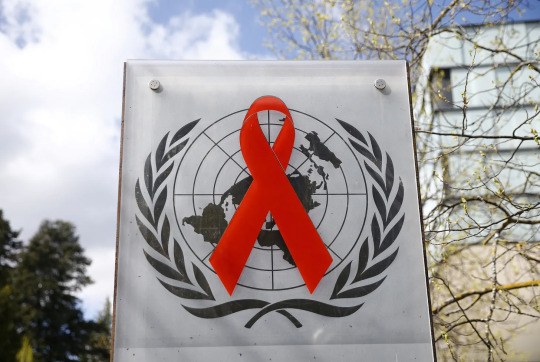
It is possible to end AIDS by 2030 if countries demonstrate the political will to invest in prevention and treatment and adopt non-discriminatory laws, the United Nations said on Thursday.
In 2022, an estimated 39 million people around the world were living with HIV, according to UNAIDS, the United Nations AIDS program. HIV can progress to AIDS if left untreated.
6. Conjoined twins released from Texas Children’s Hospital after successfully separated in complex surgery

Conjoined twins are finally going home after the pair was safely separated during a complex surgery at Texas Children’s Hospital in June.
Ella Grace and Eliza Faith Fuller were in the neonatal intensive care unit (NICU) for over four months after their birth on March 1. A large team of healthcare workers took six hours to complete the surgery on June 14. Seven surgeons, four anesthesiologists, four surgical nurses and two surgical technicians assisted with the procedure.
7. From villains to valued: Canadians show overwhelming support for wolves
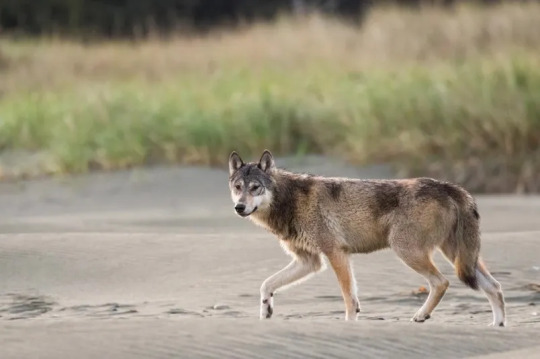
Despite their record in popular culture, according to a recent survey, seven in 10 Canadians say they have a “very positive” view of the iconic predators.
Here's a fascinating video about how wolves changed Yellowstone nat'l park:
youtube
----
That's it for this week :)
This newsletter will always be free. If you liked this post you can support me with a small kofi donation:
Support this newsletter ❤️
Also don’t forget to reblog.
1K notes
·
View notes
Note
Is there a story behind China's one child policy that makes it not as horrifying as western media claims?
The defining feature of China's development for the past 70 years has been the urban-rural divide. In order to develop a semi-feudal country with a very low industrial level into an industrialised, socialist nation, it was necessary to develop industrial centres. To 'organically' develop industrial centres would have taken many decades, if not centuries of continued impoverishment and starvation, so programs were put in place to accelerate the development of industry by preferentially supporting cities.
Programs like the 'urban-rural price scissors' placed price controls on agricultural products, which made food affordable for city-dwellers, at the direct expense of reducing the income of rural, agricultural areas. This hits on the heart of the issue - to preferentially develop industrial centres in order to support the rest of the country, the rest of the country must first take up the burden of supporting those centres. Either some get out of poverty *first*, or nobody gets out of poverty at all. The result being: a divide between urban and rural areas in their quality of life and prospects. In order to keep this system from falling apart, several other policies were needed to support it, such as the Hukou system, which controlled immigration within the country. The Hukou system differentiated between rural and urban residents, and restricted immigration to urban areas - because, given the urban-rural divide, everyone would rather just try to move to the cities, leaving the agricultural industry to collapse. The Hukou system (alongside being a piece in many other problems, like the 'one country two systems', etc) prevented this, and prevented the entire thing from collapsing. The 'one child policy' was another system supporting this mode of development. It applied principally to city-dwellers, to prevent the populations of cities expanding beyond the limited size the agricultural regions could support, and generally had no 'punishments' greater than a lack of government child-support, or even a fine, for those who still wanted additional children. Ethnic minorities, and rural residents, were granted additional children, with rural ethnic minorities getting double. It wasn't something anyone would love, but it served an important purpose.
I use the past-tense, here, because these systems have either already been phased out or are in the process of being phased out. The method of urban-rural price scissors as a method of development ran its course, and, ultimately, was exhausted - the negative aspects, of its underdevelopment of rural regions, began to overwhelm its positive aspects. So, it was replaced with the paradigm of 'Reform and Opening Up' around the 1980s. Urban-rural price scissors were removed (leading to protests by urban workers and intellectuals in the late '80s), and the Hukou system, along with the 'one child policy', were and are being slowly eased out as lessening inequality between the urban and rural areas make them unnecessary. Under the new system, the driver of development was no longer at the expense of rural regions, but was carried out through the internal market and external capital. The development paradigm of Reform and Opening Up worked to resolved some contradictions, in the form of the urban-rural divide, and created some of its own, in the form of internal wealth divisions within the cities. Through it, over 800 million people were lifted out of extreme poverty - almost all of them being in rural areas - and extreme poverty was completely abolished within China. 'Extreme poverty' can be a difficult thing for westerners to grasp, wherein poverty means not paying rent on time, but to illustrate - many of the last holdout regions of extreme poverty were originally guerrilla base areas, impassable regions of mountainside which were long hikes away from schools or hospitals, wherein entire villages were living in conditions not dissimilar to their feudal state a century before. These villages were, when possible, given infrastructure and a meaningful local industry accounting their environment and tradition (like growing a certain type of mountainous fruit), or entirely relocated to free government-built housing lower down the mountain that was theirs to own. These were the people the 'one child policy' was aiding, by reducing the urban population they had to support. Again, there were exemptions for rural and ethnic minority populations to the policy.
Even now, Reform and Opening Up is running its course. Its own negative aspects, such as urban wealth inequality, are beginning to overcome its positive aspects. So, the new paradigm is 'Common Prosperity', which will work to resolve the past system's contradictions, and surely introduce its own contradictions in the form of chafing against the national bourgeoisie, as it increases state control and ownership of industry, and furthers a reintroduced collectivisation. Organising a nation of well over a billion people is not simple. It is not done based on soundbytes and on picking apart policies in the abstract for how 'dystopian' they sound. It is an exceedingly complex and interconnected process based on a dialectical, material analysis of things; not a utopian, idealist one. What matters is this: those 800,000,000 people now freed from absolute poverty. The things necessary to achieve that were, unquestionably, good things - because they achieved that. They had their negative aspects, as does everything that exists, but they were unquestionably correct and progressive things.
845 notes
·
View notes